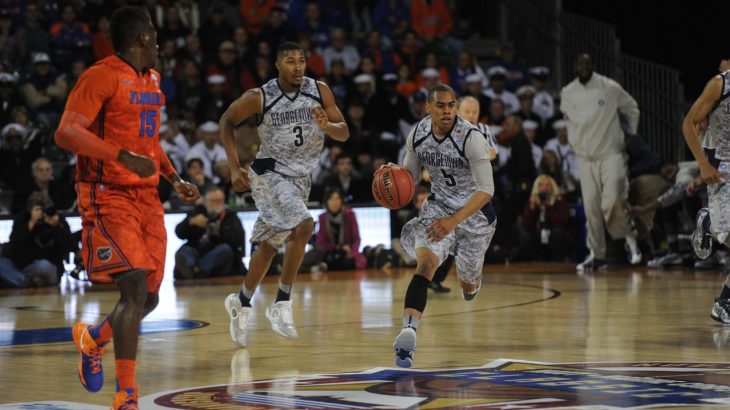Jerry West, the model representing the National Basketball Association, wore baseball shorts the length of loincloths. Michael Jordan motivated a major change when he appealed for a longer and baggier cut. It was then a group of freshmen at the University of Michigan known as the “Fab Five” became a national name in the early 1990s in part due to their sartorial swagger, with basketball shorts that dropped beneath the knees.
However, now the hemline is creeping back up. In early November, Cleveland Cavaliers superstar LeBron James declared he would wear shorter and thinner shorts this season, his 13th in the league, because he wanted to provide a more professional appearance. But while he’s the highest-profile convert to the shorter brief, he isn’t the first. The emerging generation of pro basketball players, one which came of age wearing tighter clothes from the floor, beat him to it.
Kelly Oubre Jr., a 20-year-old rookie for the Washington Wizards, rolls his shorts up at the waistband and from the base for almost every practice and pregame warmup, leaving them distinctly shorter and tighter compared to his peers. He takes a more conservative strategy for matches, folding just his waistband, however, the alteration nonetheless hikes the base of the shorts a few inches over his knees, exposing more leg than most NBA players have within the previous two decades.
From high school ranks through to college, basketball players have increasingly chosen slender and short over long and baggy in the last couple of years in keeping with off-court trends.
The progression from Walt Frazier’s extravagant fur coats in the 1970s to the oversize throwback jerseys in the turn of this century, basketball and fashion have interwoven for decades. Stars like Russell Westbrook of the Oklahoma City Thunder and Dwyane Wade of the Miami Heat have expanded their celebrity status to the fashion world.
They effectively vanished with the retirement in 2003 of Hall of Fame point guard John Stockton, the NBA’s final notable displayer of all upper-leg skin.
As knees disappeared, fingers began to wag, and an image-conscious league shot steps. The NBA introduced a principle in 1997 requiring that shorts should not fall below one inch above the knee and also periodically broken down by fining players. The movement was widely criticized as a racist dictate against a work force dominated by young African American players who favored hip-hop clothing staples such as baggy jeans, comfortable basketball hoodies, fitted baseball caps, jerseys and oversize T-shirts.
However, after that, Nguyen clarified, clothing in hip-hop was already undergoing a drastic shift from outsized to slender. It was only a matter of time before it conveyed to off-court style.
Some players attest to making the switch for practical reasons. In 2011, Will Cummings, then a freshman guard at Temple, started rolling his buttery shorts only because they were too large on him. They settled over his knee, and he quickly grew up to them. The next year, he downsized into a large but still rolled up his shorts. As Cummings’s College career progressed, teammates started catching on. By his senior year, he noticed competitions also sporting snugger shorts for trend purposes.
Last year, NBA veteran Chris Douglas-Roberts requested size medium shorts when he signed with the Los Angeles Clippers, an option that demanded a special order by the team. He clarified that the shorter shorts, which he stated sat six inches over his knee and exhibited his compression shorts under, let him to move more openly laterally while playing defense.
Jared Dudley and other Wizards players admitted that their shorts have shrunk in the past few years but assured they would not play in anything too comfortable because they’d feel uncomfortable showing too much. Most placed the limit at mid-thigh.
Notions of masculinity are an inherent element at the bend towards tighter, shorter and more compact clothes but also, it seems, in placing limitations on how tight, short and little. Oubre has received some lighthearted banter from teammates because of their wardrobe choices for his less conservative look. He also explained a fan heckled him for wearing his shorts high and tight through a pregame warmup session.

